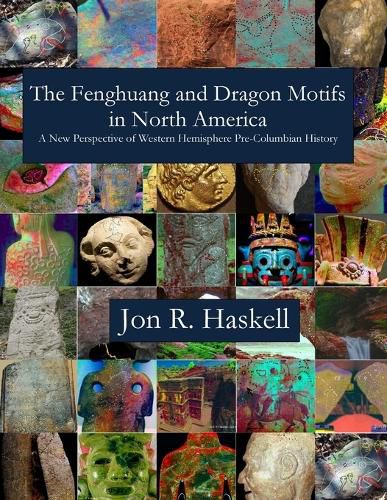Readings Newsletter
Become a Readings Member to make your shopping experience even easier.
Sign in or sign up for free!
You’re not far away from qualifying for FREE standard shipping within Australia
You’ve qualified for FREE standard shipping within Australia
The cart is loading…






This title is printed to order. This book may have been self-published. If so, we cannot guarantee the quality of the content. In the main most books will have gone through the editing process however some may not. We therefore suggest that you be aware of this before ordering this book. If in doubt check either the author or publisher’s details as we are unable to accept any returns unless they are faulty. Please contact us if you have any questions.
Universally found symbols have long been a subject of debate. One position argues they are a result of independent development and the other, a result of cultural migration. In this paper I argue for the later position by presenting a gallery of tracings of subtle background motifs now known as the Chinese Fenghuang bird pair and a believed to be pre-Neolithic Dragon depiction on various venues including: lithic tools, sculpted heads, figurines, caves, escarpments, stone tablets, buildings and silk monochromatic paintings from both hemispheres. The graphics will illustrate that the motifs first appear on Solutrean lithic material and remained generally unchanged in appearance and positioning relative to each other to later in time Clovis examples from the Cactus Hill and Gault sites in North America, and the Neolithic site of Laonainaimiao in Henan Province China. T More recently in history, I present a sculpted skull from Chavin de Hunatar in Peru dated 1500 BCE bearing the two motifs and which also has diagnostic elements of the Mesoamerican rain gods Chaac and Tlaloc, along with other Mesoamerican examples showing the motifs continued use on Olmec thru Aztec artifacts. Focusing on cultural groups in eastern North America and the upper Ohio River Valley, I present tracings showing the continued use of the motifs by the Paleo-Eskimo in the Sub-Arctic to the more southerly Glacier Kame, Adena, Hopewell and Mississippian cultures. As an art based research project, this paper is heavily graphic dependent with limited commentary, but it will demonstrate that the world has always been a small and there is much to be learned about the history of the Western Hemisphere.
$9.00 standard shipping within Australia
FREE standard shipping within Australia for orders over $100.00
Express & International shipping calculated at checkout
This title is printed to order. This book may have been self-published. If so, we cannot guarantee the quality of the content. In the main most books will have gone through the editing process however some may not. We therefore suggest that you be aware of this before ordering this book. If in doubt check either the author or publisher’s details as we are unable to accept any returns unless they are faulty. Please contact us if you have any questions.
Universally found symbols have long been a subject of debate. One position argues they are a result of independent development and the other, a result of cultural migration. In this paper I argue for the later position by presenting a gallery of tracings of subtle background motifs now known as the Chinese Fenghuang bird pair and a believed to be pre-Neolithic Dragon depiction on various venues including: lithic tools, sculpted heads, figurines, caves, escarpments, stone tablets, buildings and silk monochromatic paintings from both hemispheres. The graphics will illustrate that the motifs first appear on Solutrean lithic material and remained generally unchanged in appearance and positioning relative to each other to later in time Clovis examples from the Cactus Hill and Gault sites in North America, and the Neolithic site of Laonainaimiao in Henan Province China. T More recently in history, I present a sculpted skull from Chavin de Hunatar in Peru dated 1500 BCE bearing the two motifs and which also has diagnostic elements of the Mesoamerican rain gods Chaac and Tlaloc, along with other Mesoamerican examples showing the motifs continued use on Olmec thru Aztec artifacts. Focusing on cultural groups in eastern North America and the upper Ohio River Valley, I present tracings showing the continued use of the motifs by the Paleo-Eskimo in the Sub-Arctic to the more southerly Glacier Kame, Adena, Hopewell and Mississippian cultures. As an art based research project, this paper is heavily graphic dependent with limited commentary, but it will demonstrate that the world has always been a small and there is much to be learned about the history of the Western Hemisphere.